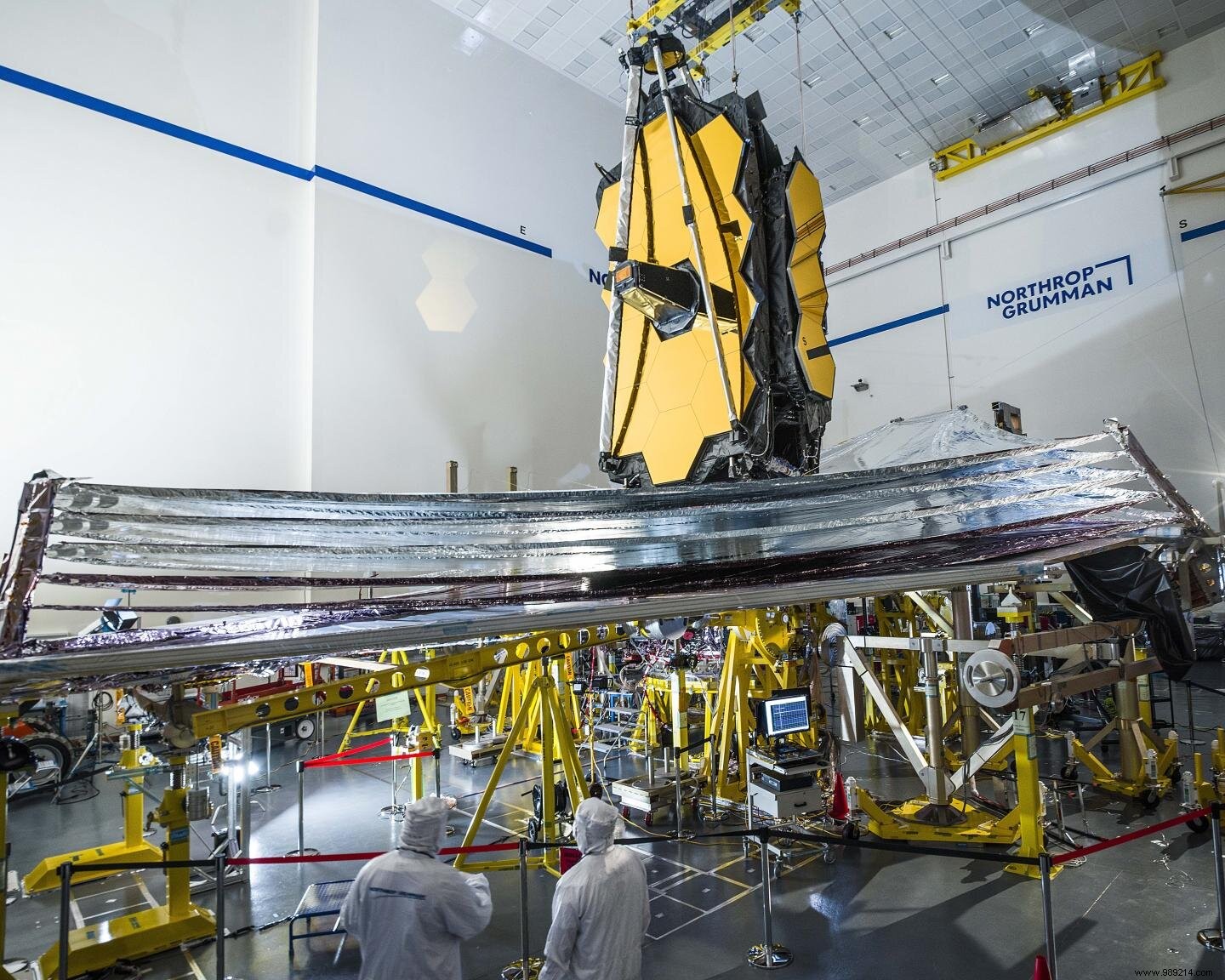The size of a tennis court, the James Webb Telescope's five-layer sunshade was recently successfully deployed at NASA facilities. This milestone brings us closer to its planned launch next year.
The James Webb Telescope is one of the most anticipated space observatories, with a launch normally scheduled for next October. Positioned around the Lagrange point L2, 1.5 million kilometers from Earth on the side opposite the Sun, this worthy "Hubble successor" will be able to probe the early Universe like never before. The telescope will also be able to measure the composition of the atmospheres of nearby exoplanets. In this way, astronomers will then be able to estimate their degree of habitability.
Naturally, before releasing such a gem into space, it is better to make sure that everything is working normally. Last April, NASA engineers successfully deployed the centerpiece of this long-awaited instrument:its gigantic main mirror. Tests carried out this summer aimed to ensure that the observatory would respond well to commands once in space. Again, everything went without a hitch.
More recently, engineers performed a final round of full-scale deployment and tensioning tests of the telescope's five-layer sunshield.
The JWT, we remind you, will be entirely focused on infrared wavelengths , largely invisible to human eyes. The problem is that it is very difficult to "see the cosmos" in infrared from the earth's ground because of the light pollution emanating from the heat. Everything, from the human body to the planet, indeed radiates heat.
That is why the James Webb Telescope will be placed about 1.5 million kilometers away . But here again, the instrument will have to deal with a very important source of heat:that of the Sun.
To cope with this, NASA engineers therefore imagined a sun visor 22 meters long by 11 meters wide , made up of five very thin layers of extremely reflective materials . This incredible structure should make it possible to keep the telescope in the shade, at temperatures around -223°C . Note that some of the instruments on board will also be kept cool (-258°C) thanks to an active cooling system.
During these tests, engineers sent a series of commands to the telescope which, in response, activated 139 actuators, eight motors and thousands of other components to unfold and stretch the five membranes of its sun visor. One of the main challenges of this test was being able to unfold it in Earth's gravity environment, which causes friction. That said, everything went very well.

The team is now preparing for the final testing of post-environmental deployment before the telescope is dispatched to the launch site next summer (Guyana). This sun visor will then be folded around two sides of the observatory which, it will be recalled, will be placed in an Ariane 5 launcher, provided by the European Space Agency.